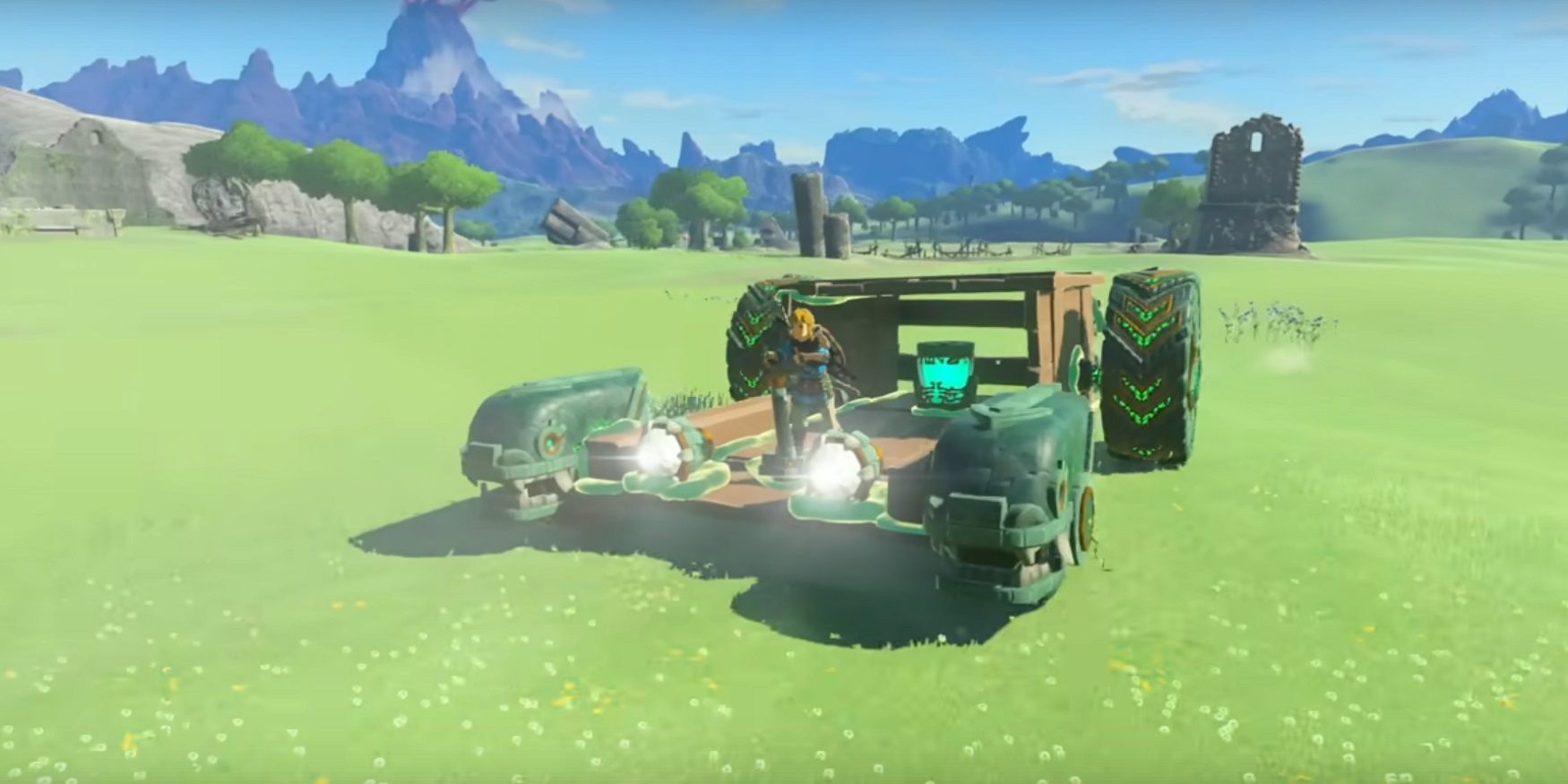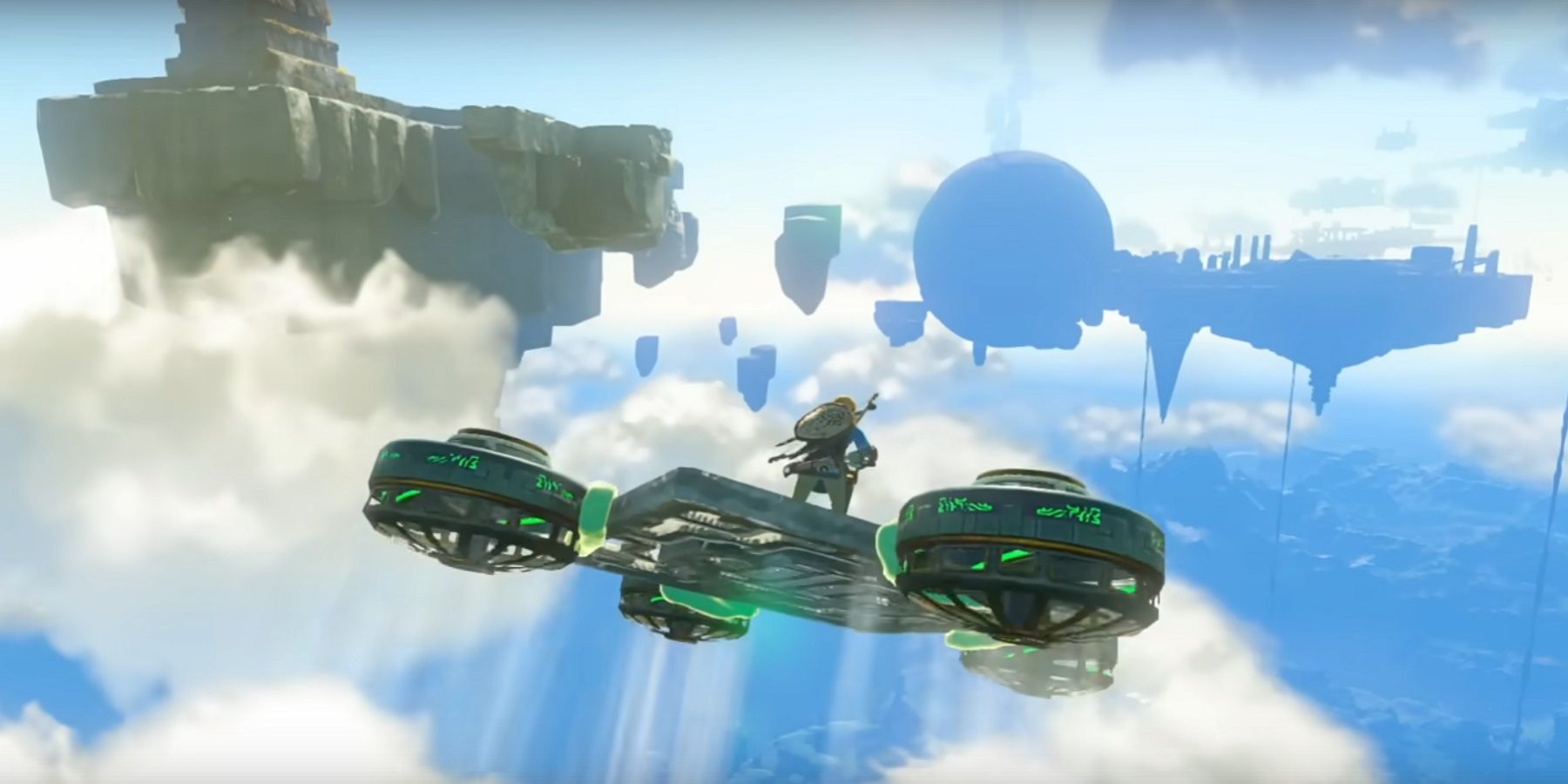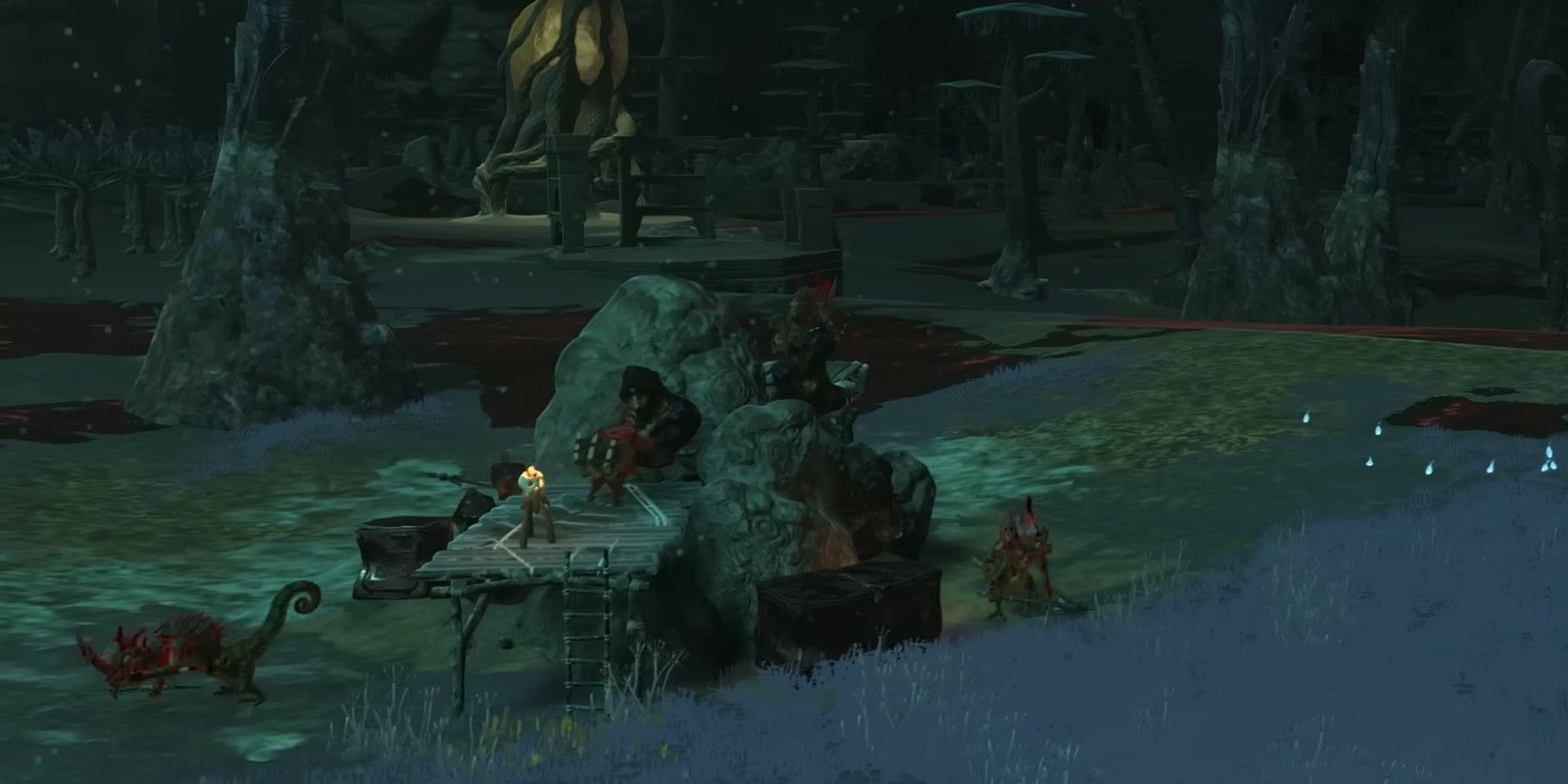As a rare direct sequel in the Zelda series, The Legend of Zelda: Tears of the Kingdom‘s map expands on Breath of the Wild‘s in ambitious ways. Taking full advantage of the game’s lengthy development cycle, Tears of the Kingdom builds on Breath of the Wild‘s open-world formula, expanding combat and traversal with several new abilities, new locations, and the re-incorporation of some more traditional Zelda elements that Breath of the Wild broke away from.
Despite being one of Nintendo’s longest-running flagship franchises, direct Zelda sequels like Tears of the Kingdom are a rarity for the series, with most entries telling related, but distinctly separate stories with their own unique flavors of gameplay and setting. Wind Waker, for example, differs greatly in style from the next mainline Zelda game to be released, Twilight Princess, in tone, art style, and story. However, direct sequels like Tears of the Kingdom do have a distinct advantage – they allow the developers to more directly build on their previous game, addressing weak points and, in many cases, allowing the game to be more ambitious thanks to the presence of a strong foundation.
Tears of the Kingdom’s Map Is Larger than BOTW’s
Although Tears of the Kingdom takes place in the same Hyrule as Breath of the Wild, a number of huge changes make the world significantly larger. For example, ground-level Hyrule has been changed significantly from its state in BOTW, and although many locations might be familiar, additions like new villages, shrines, and enemy camps are likely to keep even the game’s most familiar territory feeling new. Of particular interest, however, are the two other “layers” of the map, which essentially triple the area of TOTK‘s world by adding both a number of floating Sky Islands, as well as an expansive underground world.
The Surface of Hyrule is Changed in TOTK
Being a direct sequel, TOTK‘s Hyrule is in the same physical location as BOTW‘s – something of a first for the series, as even previous direct sequels like Majora’s Mask take place in a different setting from their predecessors. Luckily, however, much of Hyrule has undergone significant change in the time since BOTW, with villages, friendly settlements, and enemy camps all being significantly different from their BOTW appearances. Even the game’s various towers and shrines have gone through major shifts, and many of the first game’s most notable landmarks, such as the Seven Heroine statues in the Gerudo Desert, have been changed as well.
Outside the open-world aspects, however, TOTK also returns to Zelda‘s roots in some ways, with the game’s various dungeons taking after traditional Zelda dungeons more than BOTW‘s Divine Beasts. Each dungeon is a major landmark on the map, and dungeons, as well as the lead-up to each dungeon and other caves and tunnels found in the overworld, forms a major part of Tears of the Kingdom‘s exploration and progression. But, importantly, TOTK‘s dungeons aren’t limited to ground-level Hyrule; they can also be found in the two other “layers” of the game’s open world: the floating Sky Islands and the subterranean underground.
TOTK’s Sky Islands Take Link Above The Clouds
Featured prominently in much of Tears of the Kingdom‘s pre-release advertising, the Sky Islands form the top “layer” of TOTK‘s world – although, in many cases, they will be somewhat difficult to access and move around. Often, exploring the game’s sky will necessitate the use of TOTK‘s new vehicle building or abilities like Recall. As a result, access to the various Sky Islands will be limited for some of the game, as players will likely need to obtain certain upgrades or items before the sky is more freely explorable.
However, unlike the clear split between sky and ground in something like Skyward Sword, transitioning between the different “layers” of TOTK is impressively seamless. Players are able to pilot vehicles, ride Recalled debris, glide, or simply fall between the sky and ground levels of Hyrule with no need for loading screens or transitions, making exploration an almost completely uninterrupted experience. And while the disconnected nature of the Sky Islands means they don’t occupy quite as much space as ground-level Hyrule, falling from the sky may prove an excellent way to access the third, lowest layer of TOTK‘s map – the expansive underground.
Underground Exploration Is Expansive in TOTK
Unlike the Sky Islands, TOTK‘s underground sections have less of a focus in the game’s advertising, with the game’s trailers providing only brief sneak peeks at subterranean areas. The lowest layer of TOTK‘s map, however, is expansive, large enough to have a map separate from above-ground Hyrule, similar to the various underground rivers of Elden Ring‘s Lands Between. Also, similarly to Elden Ring, access to the underground looks limited, as many of its entrances in Hyrule are surrounded by hazardous Malice – meaning that players will often have to drop straight into a hole from somewhere high up.
Additionally, in comparison to the broken-up nature of the Sky Islands, TOTK‘s underground is ambitiously massive – just about matching the size of ground-level Hyrule. However, while much of the surface will be familiar to players returning from Breath of the Wild, the underground is entirely new and will be especially important for obtaining some important items or encountering optional bosses. Although much of the advertising for Tears of the Kingdom chose to focus on floating Sky Islands, the game’s underground will likely be where most players get the most mileage out of TOTK‘s open-world design.
Although reusing the same Hyrule as Breath of the Wild may raise some concerns, Tears of the Kingdom‘s map is both significantly changed and drastically larger than its predecessor’s, with even more of a focus on verticality. Sky Islands and the vast underground add an extra dimension to TOTK‘s Hyrule, giving players ample reason to engage with the game’s new vehicle building mechanics. Building on Breath of the Wild‘s already impressive open world, The Legend of Zelda: Tears of the Kingdom brings to life the largest iteration of Hyrule yet.
Source: Nintendo of America/YouTube
This story originally appeared on Screenrant




